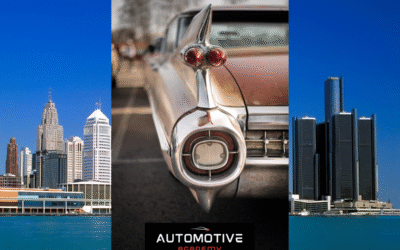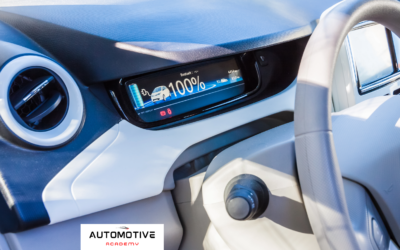Italy's largest DC charging station installation | Video
We entered ABB's E-Mobility centre, an Italian excellence
ABB E-mobility is the reason why San Giovanni Valdarno has officially become one of the protagonists of electric mobility in Italy. The manufacturer's largest plant for the production of DC recharging stations, the 'super fast' recharging stations that find their product of excellence in Terra 360, was inaugurated here.
Less than two years have passed, it was July 2020, from the start of the construction site to the complete realisation of the plant, which is now fully productive. Valdarno is the latest in one of many milestones for the company: in 2010 the first 50 kW charger was developed, in 2012 it was among the founders of the CCS Alliance, and so on, up to the first liquid-cooled HPC (2018), directional charging in 2020 and the new Terra 360 station in 2021. Europe accounts for 50% of the company's turnover, followed by the Americas (27%) and the Asian continent (23%).
THE NUMBERS OF THE PLANT
ABB E-Mobility, the company's e-mobility division, has sold 680,000 recharging stations to date, and Valdarno is the weapon to double its production capacity: more than 10,000 DC recharging stations can be built here every year, at a rate of one every 20 minutes thanks to its seven production lines.
However, it is not just about production: the factory also has an area where Research & Development as well as the realisation of prototypes of the 'recharging stations of the future'; there are 15 test areas that can simulate 400 recharging sessions per day.
SUSTAINABILITY
Producing for electric mobility would be meaningless without a sustainable project behind it. While waiting for all national electricity to be clean, today the Valdarno plant is doing its part by aiming for gold-level LEED certification for eco-friendly buildings.
Sustainable aspects of the Valdarno facility include rainwater harvesting for irrigation, 100% recycling of production waste and 720 MWh production of electricity, which translates into a saving in terms of CO2 emissions of 338 tonnes.
Going into detail, the estimated peak production is 600 kWp and everything is managed by software that controls 9,000 devices (a device can be a lamp, a piece of equipment, a charging socket, and so on). The software allows each device to be managed in order to optimise consumption and promote energy savings.
The company fleet consists of 15 shared vehicles for employees, while those who have their own electric car can use the 68 AC charging stations and 14 DC stations.
TERRA 360: 100 KM IN 3 MINUTES
To call it a charging station is actually a bit of an understatement. Terra 360 presents itself as the flagship of charging stations, and it is also the weapon that promises to scratch the resistance of those who continue to complain about charging times. With this charging station, equipped with CCS Combo sockets with liquid-cooled cables, 100 km can be recharged in three minutes, reaching a maximum output of 360 kW.
The station allows up to four cars to be charged simultaneously with a dynamic power management system that varies according to the needs and charging status (as well as the maximum accepted power) of the simultaneously connected cars.
FUTURE PROJECTS
ABB it's not just hardwareWhile it is true that the company started with AC/DC charging, over time it has evolved (also through acquisitions), both with digital services for consumers and businesses, and with proposals in terms of fleet management and energy management. The Valdarno plant itself uses ABB's suite of services that balances energy use by matching the needs of the factory with those of the cars charging in the car parks, all starting with photovoltaic production and the related balancing of loads at different times of the day.
The future sees ABB engaged in several projects. The "megawatt charging"is to create charging stations for the electrification of heavy transport, with a new standard that supports extremely fast recharging up to 3MW, a jump of 10x compared to the commercial power delivered today by stations such as Terra 360.
The second pillar is network stability, for which there are already V2G projects across Europepaving the way for the scenario where this technology will become essential due to the high number of electric cars on the road.
On the level of charging stations, then, an ongoing project plans to recharge 200 km in 5 minutes through a new two-stage liquid cooling system. Finally, there is the whole software part where it will become essential to offer applications and services that do not require technical knowledge to electric car users, be they consumers or companies. Expanding the time horizon, there are then the studies, now experimental, related to VTOL, electric navigation and automation.
PRODUCTION AND RESEARCH
The production plant is state-of-the-art, with component tracking and management software for all systems. In research laboratorywhich occupies 3,200 square metres, synergies can be exploited between development and production for faster project feedback, as well as embracing the philosophy of 'design for manufacturing' because those who run the production lines are already in contact with those who study and engineer new products.
The production test labs have up to 2.5 MW of power and climatic chambers that can range from -40° to +70° (100° those of R&D) where thermal cycles are alternated so that the stations can withstand the fluctuations of real life.
Finally, in terms of security, there is also an EMC workshop which tests the electromagnetic emissions of products that are inevitably used in situations where they are in contact with the public. Again using climatic chambers, a life cycle corresponding to 10 real years can be simulated in less than six months, so as to test the robustness of the solution over time.
On the production line, we mention the semi-automated warehouse, in-house, automated production of electronic boards and a strong focus on the testing phase after production: if the loader is 360 kW, end-of-line tests are done with the maximum power for each product.





0 Comments